662 plates.
Over the past 17 years, we have admired, touched, photographed, and shared 662 plates. Each a unique creation. Each one is a generous and personal contribution to supporting the work to prevent and end domestic violence. Each is a piece of art and, in some cases, a useful item.
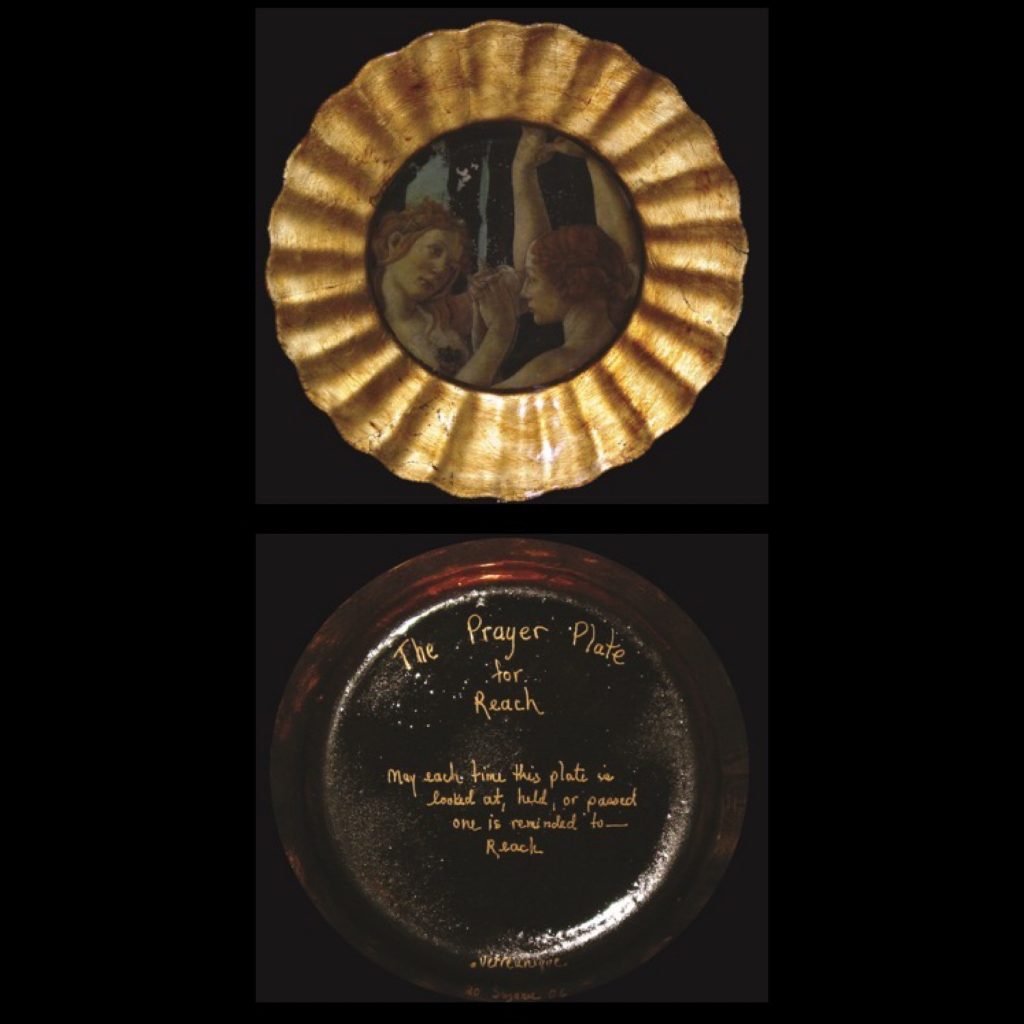
“May each time this plate is looked at, held, or passed, one is reminded to – Reach.”
Almost 20 years ago, the Waltham Battered Women Support Committee, as we were founded in 1981, was looking to the future. We wanted to start a capital campaign for a new shelter and needed to better understand the challenges and opportunities for taking this big step. We partnered with a feasibility consultant, Beth Tishler, to help us figure out how to ‘get to the next level.’ Beth was able to reach out and have conversations with volunteers and donors, past and current, about the organization and the feasibility of raising the $1 million we thought necessary to build a new shelter – a number that eventually rose to $2.5 million and set the organization on a course to tripling our size and reach.
Beth had so many really useful conversations. She talked about the communities where we live and work, the history of the organization, the experiences of people who offered time, talent, and treasure to get it off the ground and keep it operating. She heard about the good times, the frustrations, the missed opportunities, and the success stories. And she realized that “The Support Committee” needed to make some changes. It was this process that guided us to the name we have now. And it was this process that eventually lead us to reach for the stars with a new, exciting, unique fundraising event.
This new event would be a gala. It would be about raising awareness of domestic violence, raising the profile of the organization, and raising money. Money needed to build a new shelter, to increase our community programs, and to create sustainability for the organization and for survivors by establishing an Independence Fund to provide financial assistance when needed.
This new event would be different. We partnered with the Women’s Studies Research Center (WSRC) at Brandeis University, a “hub of interdisciplinary exchange between scholars and artists, faculty and students, who conduct innovative research and create art with a focus on gender issues and women’s lives.” The people in the room brought diverse experiences with art and activism that inspired some exciting ideas.
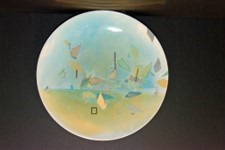
This new event would have an artistic component. What kind of art would be showcased? This conversation eventually landed on plates, painted by artists. Why plates? It is easy to see a plate and think of home, nourishment, care, and comfort. Unless a plate has been a weapon. Unless the meal upon it has been tossed aside or deemed inedible. Unless the prospect of someone coming home to eat strikes fear. Especially during this time of pandemic and sheltering at home, we have been reminded that home is not always safe. This event would reclaim the plate as a canvas for artists – and survivors.
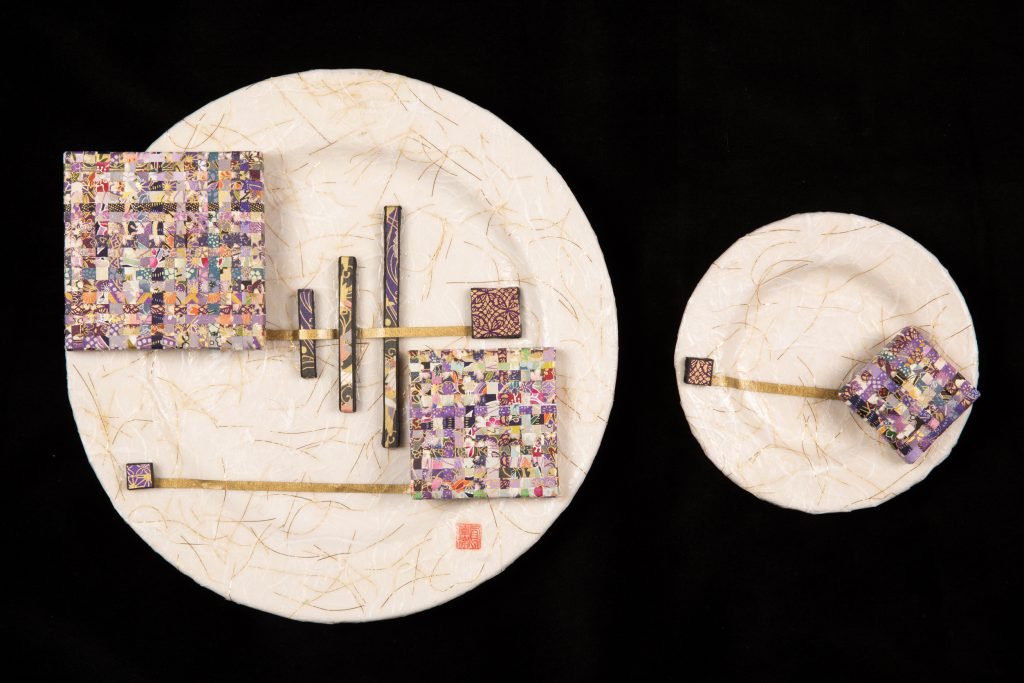
The first artists took the plate and in some cases felt constrained or committed to painting upon it. Others took the plate and saw a medium as much as a surface. They cracked it, shattered it, some encased it. Some used the glaze provided – others used more familiar media – mosaic, origami, even fur.
We met so many of these artists through Shula Reinharz, Pat Mattina, and Audrey Foster – all of whom were generous with their time and networks as we started this event. And the artists they introduced have introduced others. We have had married/partnered artists, and we have had artists’ children. Board members who paint have designed plates, as have the talented relations of other board members.
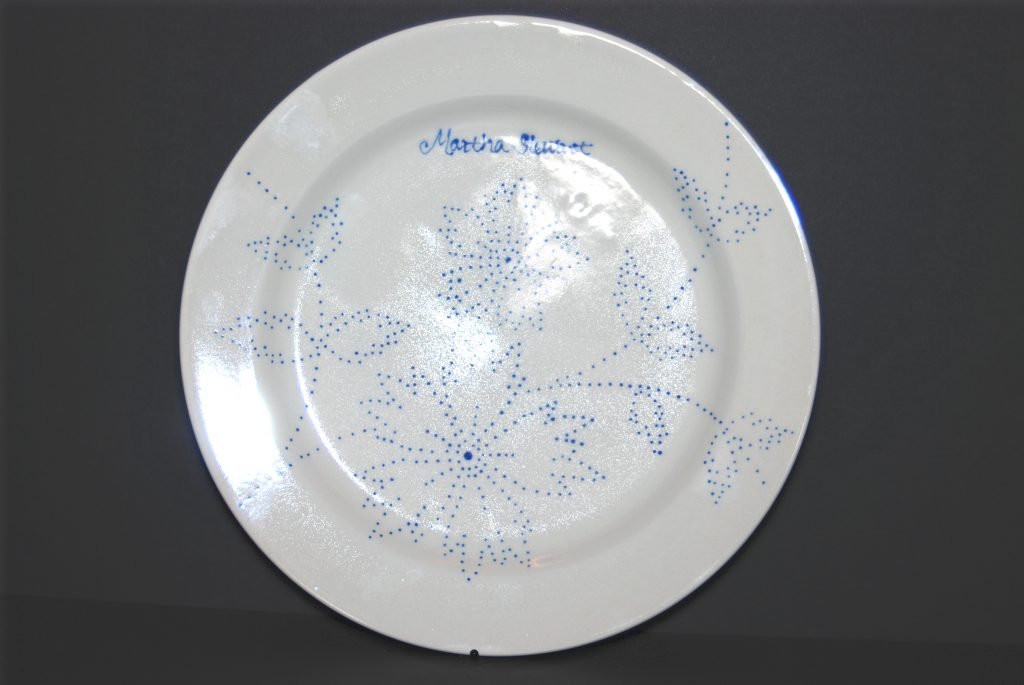
Early in the days of the gala, we tried hard to also engage folks who had skills in other directions – executives, celebrities, elected officials – and challenged them to find their inner artist… The list is long: Michael Dukakis, Ellen DeGeneres, Bruce Willis, Eve Ensler, Jay Leno, Leonard Nimoy, Dixie Carter, Barry and Eliot of Jordan’s. Several area CEOs turned out to be talented artists. We had a Martha Stewart plate – not the kind you can buy at the store. Athletes have created plates… Doug Flutie, Lawyer Milloy, Tim Wakefield, Tom Brady (and Giselle Bundchen), and the Boston Celtics (probably their art department). Mish Michaels, local meteorologist at the time, decided she wanted white glaze for clouds – but we didn’t give her any. So she walked over to the paint bar down the street and asked if she could finish it off there. She wasn’t the only one – First Lady Diane Patrick also stopped into the local paint bar to work on her plate.
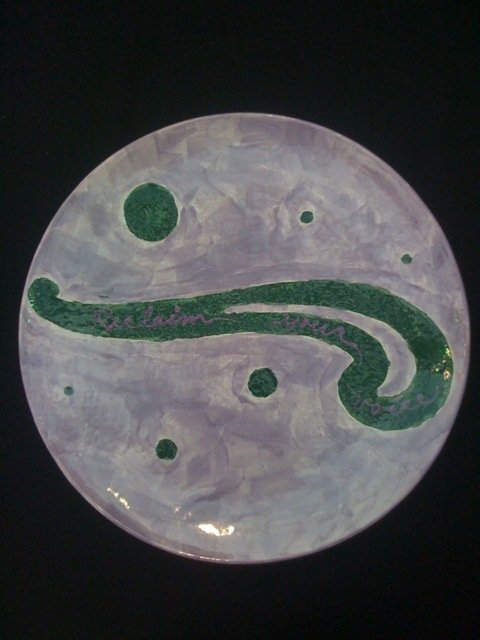
We have experimented with platters, round and square plates, large and small plates, small and large bowls too. One year, we grouped ten plates together and auctioned them as a set – spectacular dining for ten. The plates have been displayed at the WSRC, Massachusetts Medical Society, SunLife Financial, Lord&Taylor, and the Mall at Chestnut Hill.
Over the years, numerous artists have explored how their latest or greatest design translates to the surface of a plate. They take the motif or theme they have been using and find a way to ‘do it on a plate.’ One artist has presented us with a colorful cupcake each time – her signature item. Another continues to offer her trademark design – playful, curious, line drawings. One year, an artist asked herself, what do I want to see on a platter? She returned her plate with a small pen drawing of Karl Rove’s head.
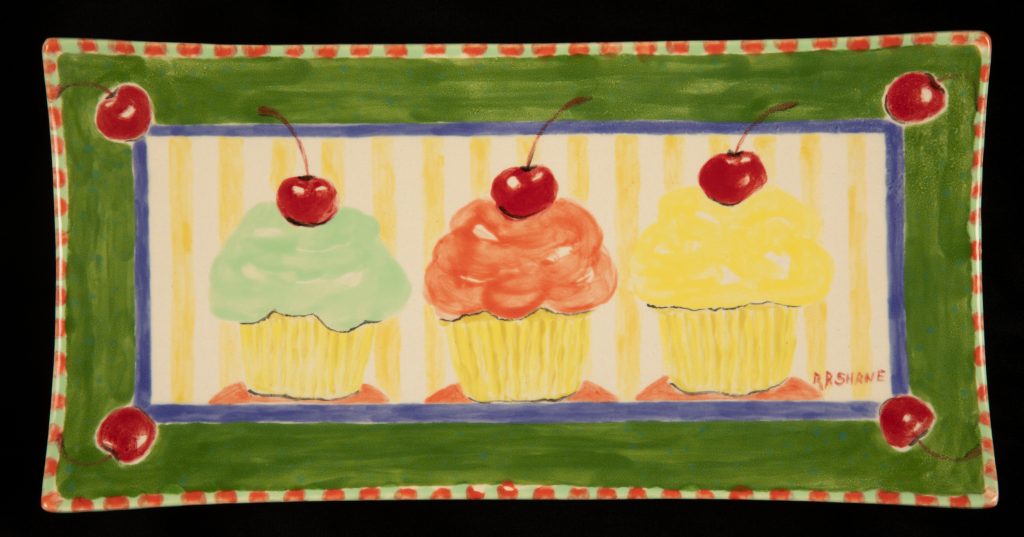
Survivors have found a space to tell their story or the story of the world they would like to see. Child survivors have used every color on the palette – rendered a bit murky through the firing process. Or shared their version of their favorite superhero. A teen found a new channel of expression. A mom found a new way to connect with her son. We have had many butterflies – a meaningful symbol of transformation for survivors of domestic violence. We have had fruits and vegetables. Many textures and colors. We have had a plate made of wood, and another made of glass. Some of the designs are bright and cheery; others are more foreboding.
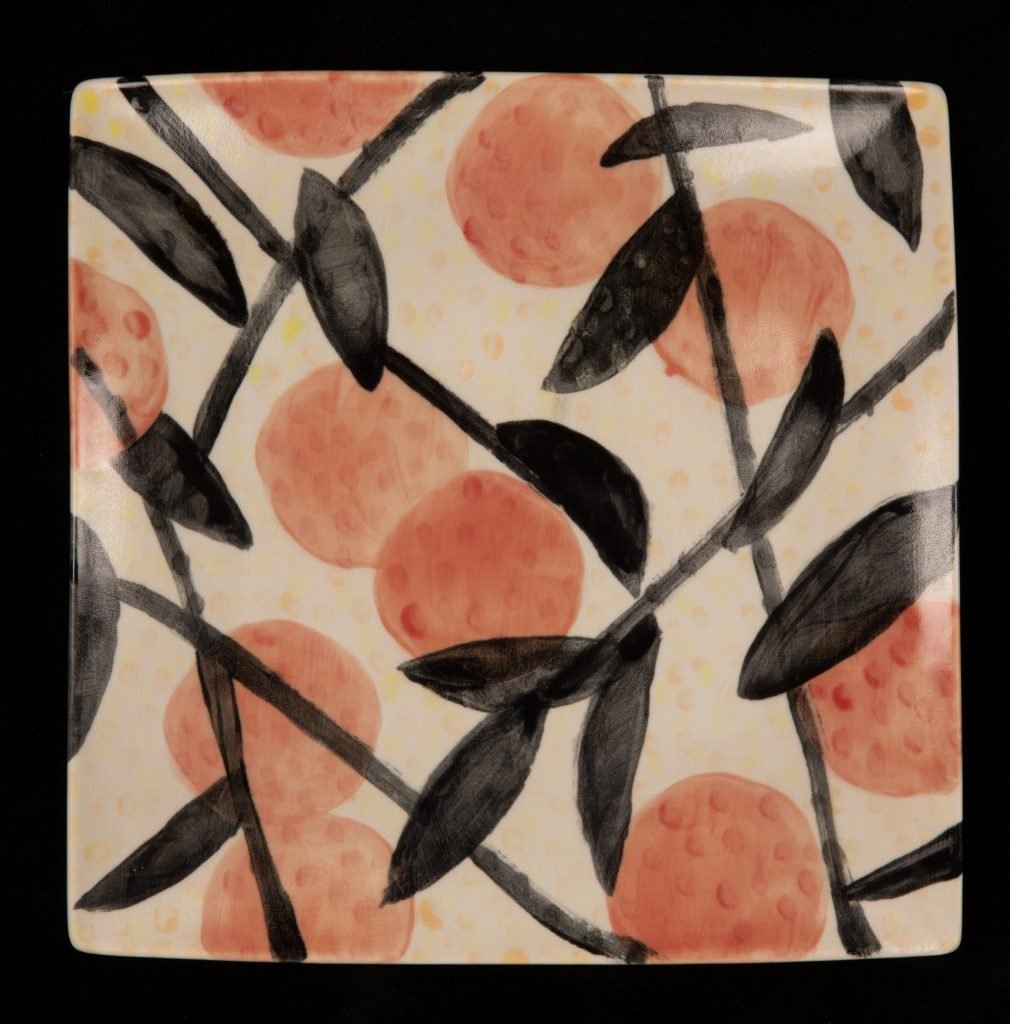
This year, four of the plates experienced an unusual response to firing in the kiln – a warping at the edges that perfectly embodies all that we are going through during this unprecedented year. Across the 17 years of this gala, across the 662 plates, we have never seen damage during the firing process. Unprecedented indeed.
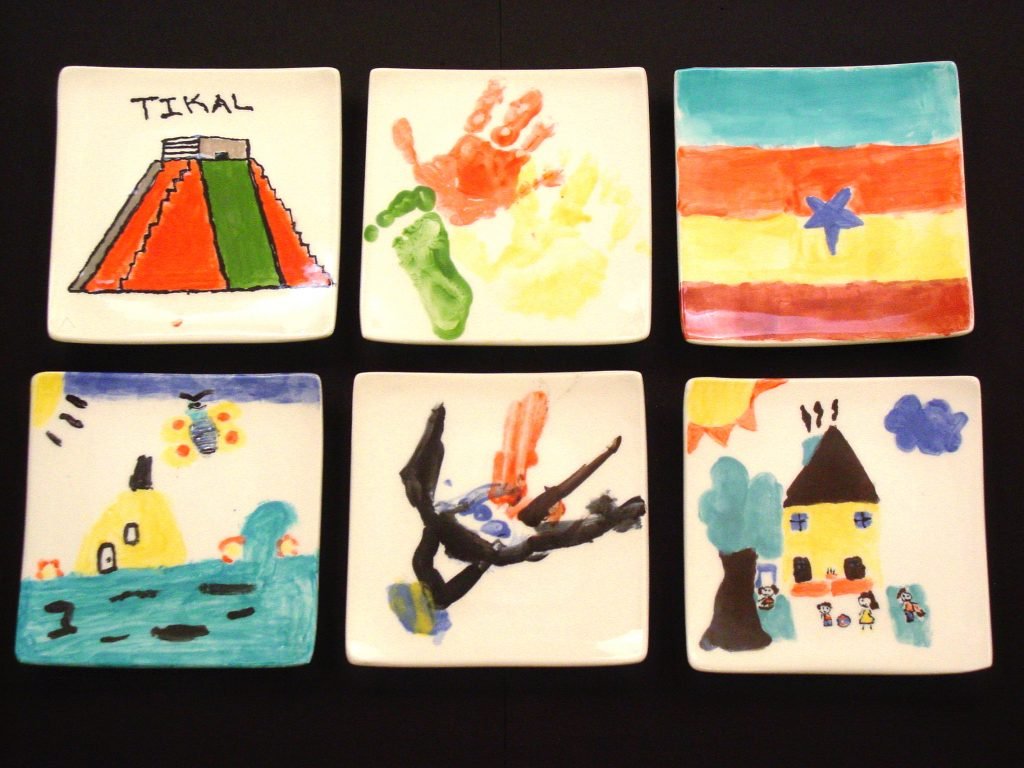
Each year a dozen or more artists offer their time and talent to create a treasure that holds the promise of healthy relationships for individuals and communities. Each plate is a unique contribution to the work to prevent and end domestic violence. We hope you will join us to appreciate these beautiful works of art while we celebrate reaching beyond domestic violence. Together. This year, the evening – virtual for the first and hopefully only time – will be hosted by emcee Robin Young of WBUR and feature the words of survivors, young people working to support healthy dating, advocates, and at least one executive director. There will be an opportunity to bid on these special plates and also on a specially curated array of items and experiences, which, like the warped plates, reflect the times we are living in.
We know you have a lot on your plates. So do we. Come check them out! See you on October 17.





